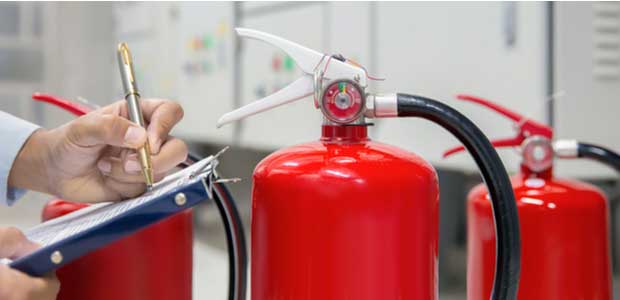
The ABCs, D, and Ks of Fire Extinguishers
Extinguishers should be located along normal paths of travel and near exits.
- By Thomas Maloney, Carl A. McMillan
- Apr 01, 2022
Fire extinguishers give us an opportunity to keep a small fire emergency from turning into a large fire emergency. Large fire emergencies may have significant economic impacts, or even cause loss of life or injury.
Commercial occupancies are required to have fire extinguishers as part of their various code requirements. These codes can be found in Occupational Safety and Health Administration’s (OSHA) requirements, the International Code Council’s Building Code and Fire Code requirements (IBC & IFC), and the National Fire Protection Association’s (NFPA) requirements. Each of these code-making organizations have set requirements for the placement, training, and use of fire extinguishers. Not all fire extinguishers are the same and they even have specific uses. For this article, we will focus on portable fire extinguisher requirements for commercial use.
There are three basic types of hazards that will classify all occupancies: light, ordinary and extra hazard (NFPA, 2022, 5.4.1.1) The NFPA (2022) states that extinguishers should be listed and labeled and shall meet or exceed all requirements of UL 711, CAN/ULC-S508, Standard for the Rating and Fire Testing of Fire Extinguishers and at least one of the applicable standards designated by Underwriters Laboratory in Canada and the United States (4.1.1).
Fire extinguishers are commonly placed in conspicuous locations so they are easy to locate in case of fire. Although the placement of fire extinguishers may seem obvious, there are guidelines and standards set forth by the OSHA, IFC, and the NFPA to provide the classification, labeling and location of portable fire extinguishers.
Classification
Fire extinguishers are classified by the type of fire that they will extinguish.
Class A fire extinguishers are used for ordinary combustibles such as wood, paper, some plastics and textiles. This class of fire requires the heat-absorbing effects of water or the coating effects of certain dry chemicals. Extinguishers that are suitable for Class A fires should be identified by a triangle containing the letter "A."
This article originally appeared in the April 2022 issue of Occupational Health & Safety.